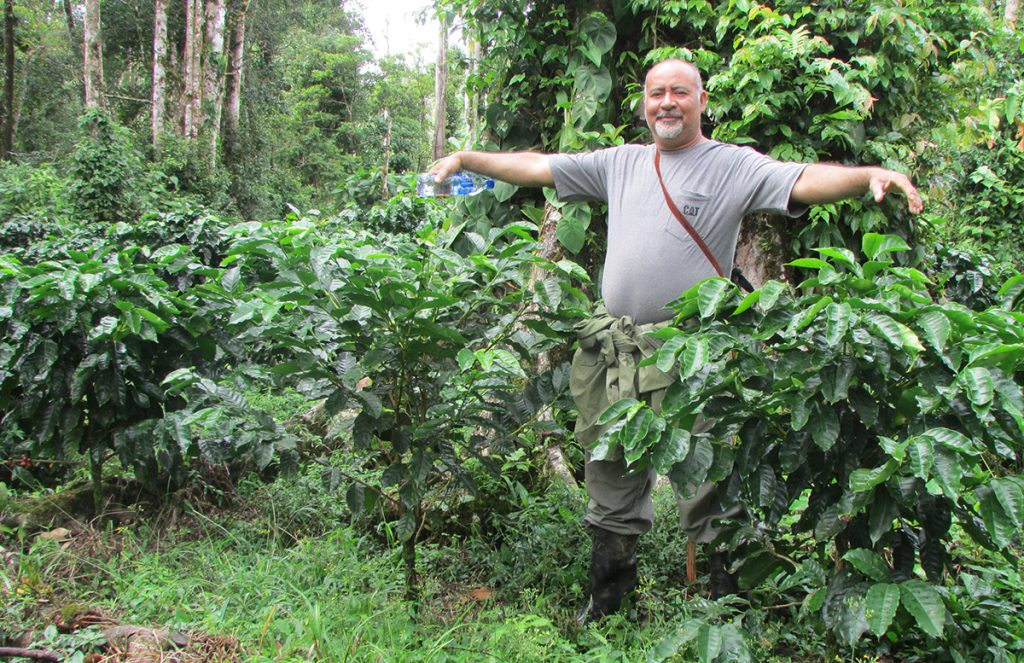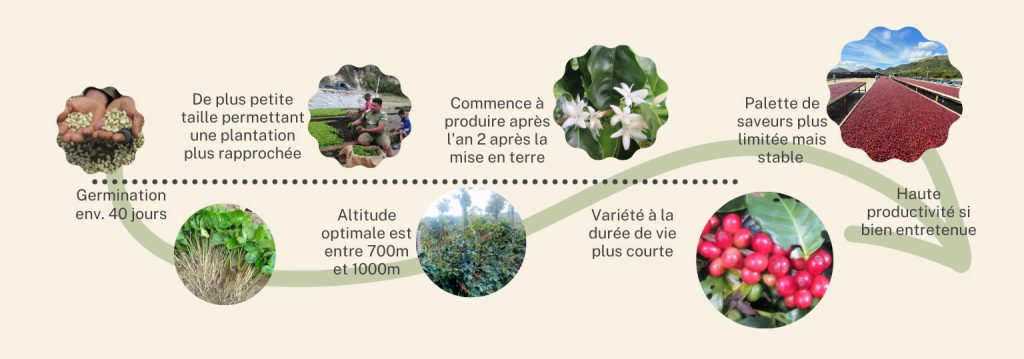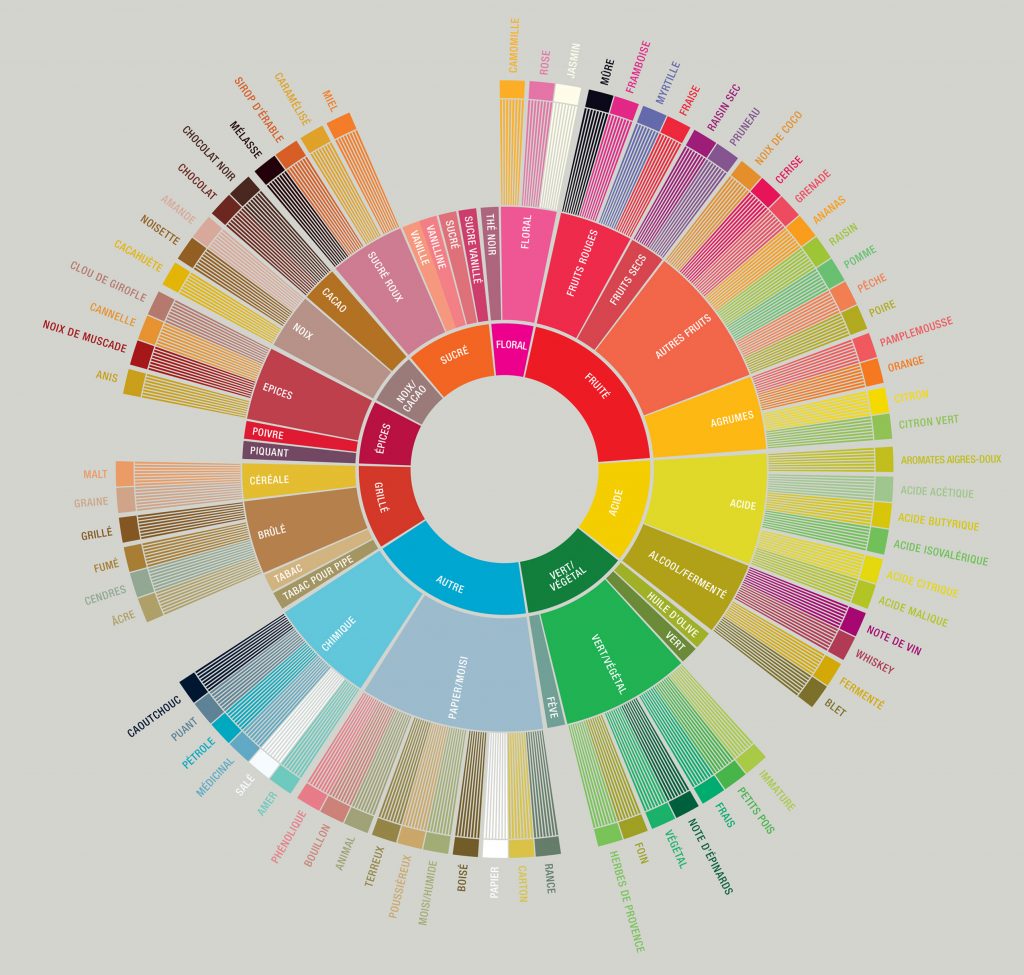Catuaî is a small compact plant existing in varieties of red or yellow fruits. It has shown low resistance to rust, fungal infections and pests.
Description
The term “Catuaí” derived from Guarani, which means “very good”. This variety produces yellow or red fruits. Created in 1949 from a cross of yellow Caturra and Mundo Novo, launched in Brazil in 1972 after a genealogical selection, now produces several lines of Catuai. It was first introduced in Honduras in 1979, where it accounts for almost half of Arabica coffee in cultivation. It is also economically important in Costa Rica, where a Catuai with yellow fruits was introduced in 1985, whose descendants spread widely throughout the country, and introduced in Guatemala in 1970, producing about 20% of the country’s production. Its presence is weaker in Nicaragua.
It is a compact plant with high yield potential and standard quality in Central America. Its small size allows for dense planting and more efficient harvesting, which in part led to the intensification of coffee growing in full sun in Central America in the 1970s and 1980s. Very sensitive to leaf rust in the coffee tree.
It is no longer new to the market but is valued for its high yield, reliable quality and potential benefit to the producer.



